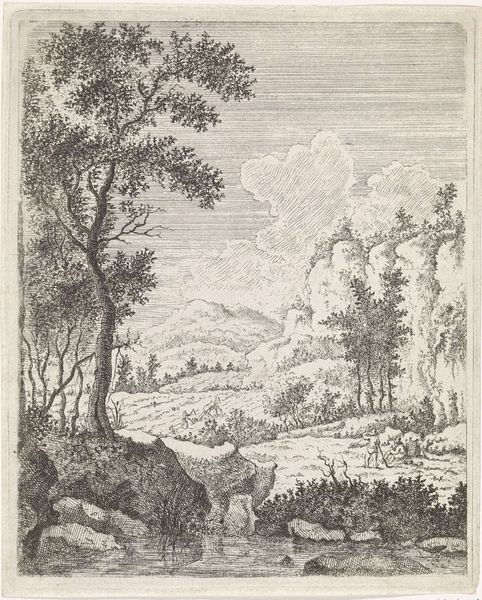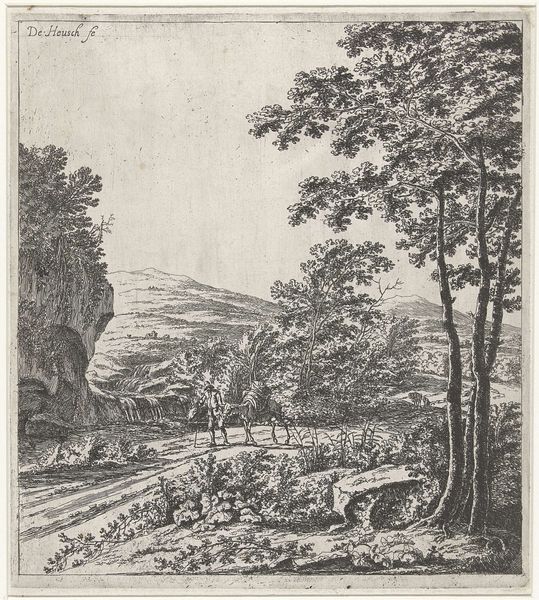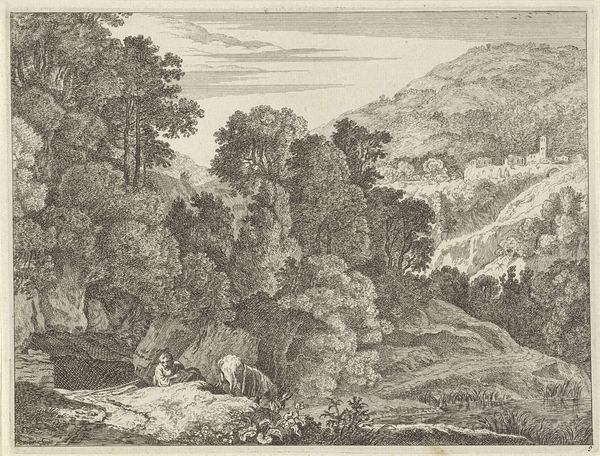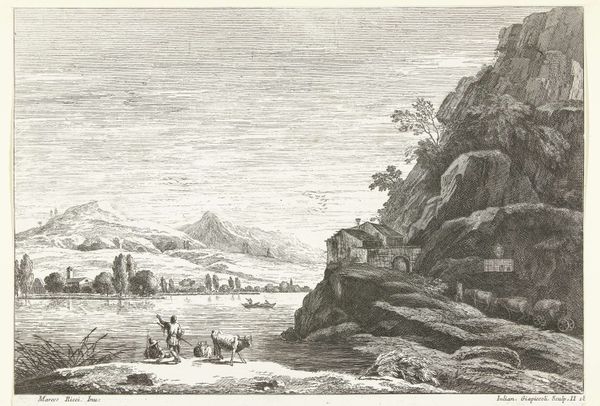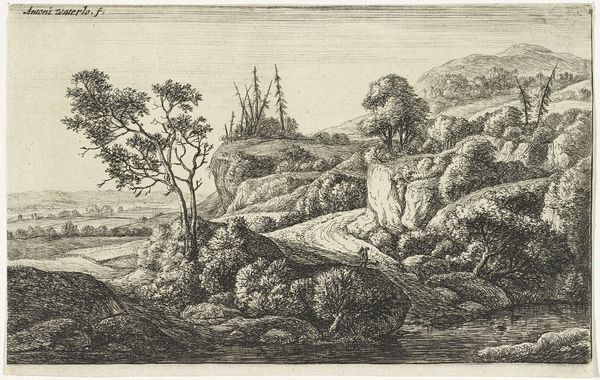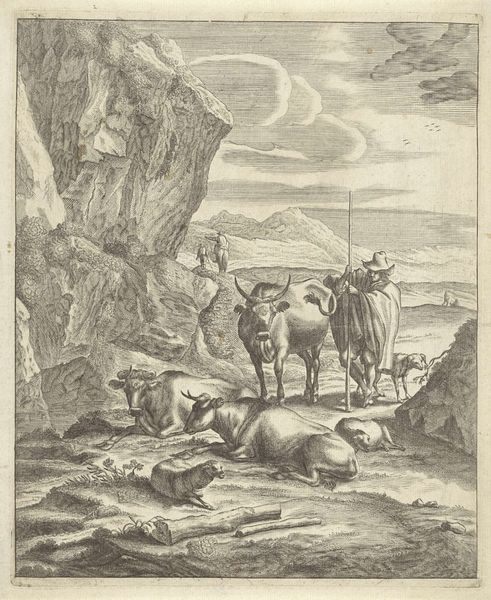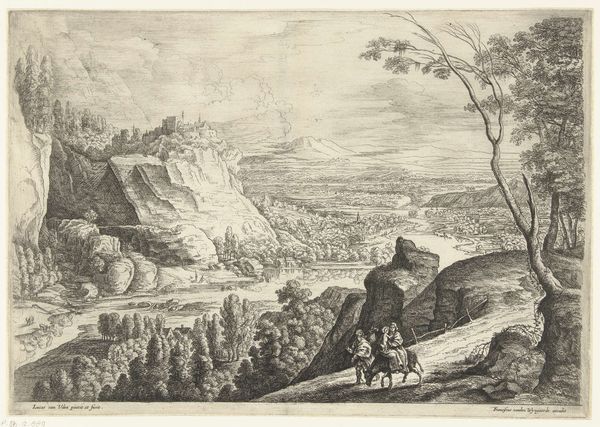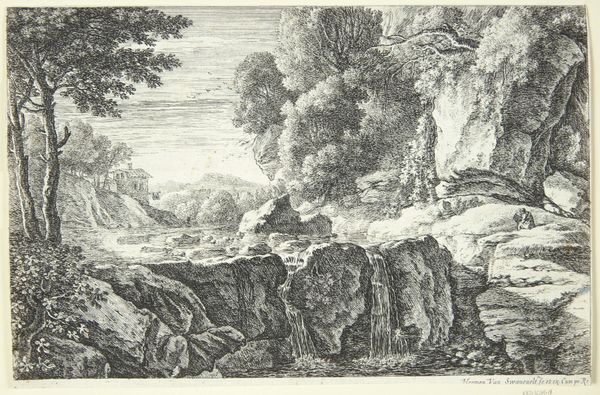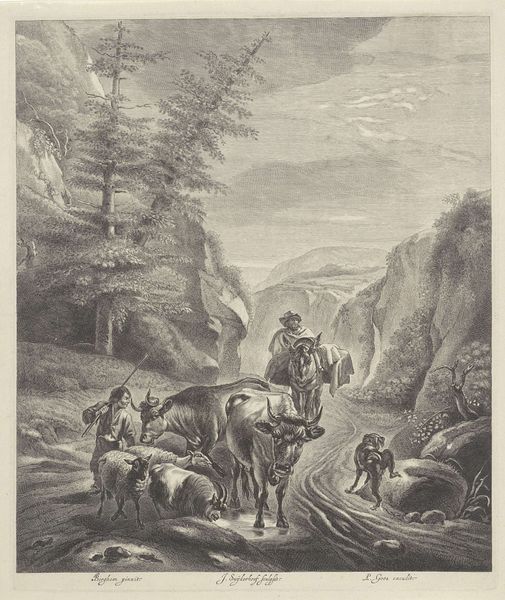
print, engraving
# print
#
landscape
#
figuration
#
romanticism
#
line
#
engraving
Dimensions: height 209 mm, width 148 mm
Copyright: Rijks Museum: Open Domain
Frédéric Théodore Faber created this print of a shepherd with his flock on a mountain path sometime in the early 19th century. During this period, Europe was undergoing significant social and economic changes, with urbanization drawing people away from rural life. The image encapsulates a certain romanticism of rural existence. We see a shepherd, dressed in what appears to be traditional garb, guiding his animals along a rugged path. The composition emphasizes the harmony between man and nature, a common theme in art of this era. Yet, we must ask, for whom was this harmony intended? As industrialization progressed, images like these often served to reinforce an idealized view of rural life, perhaps obscuring the realities of poverty and labor faced by many. This image serves as a reminder of the complex relationship between art, identity, and the stories we tell ourselves about our past.
Comments
No comments
Be the first to comment and join the conversation on the ultimate creative platform.

